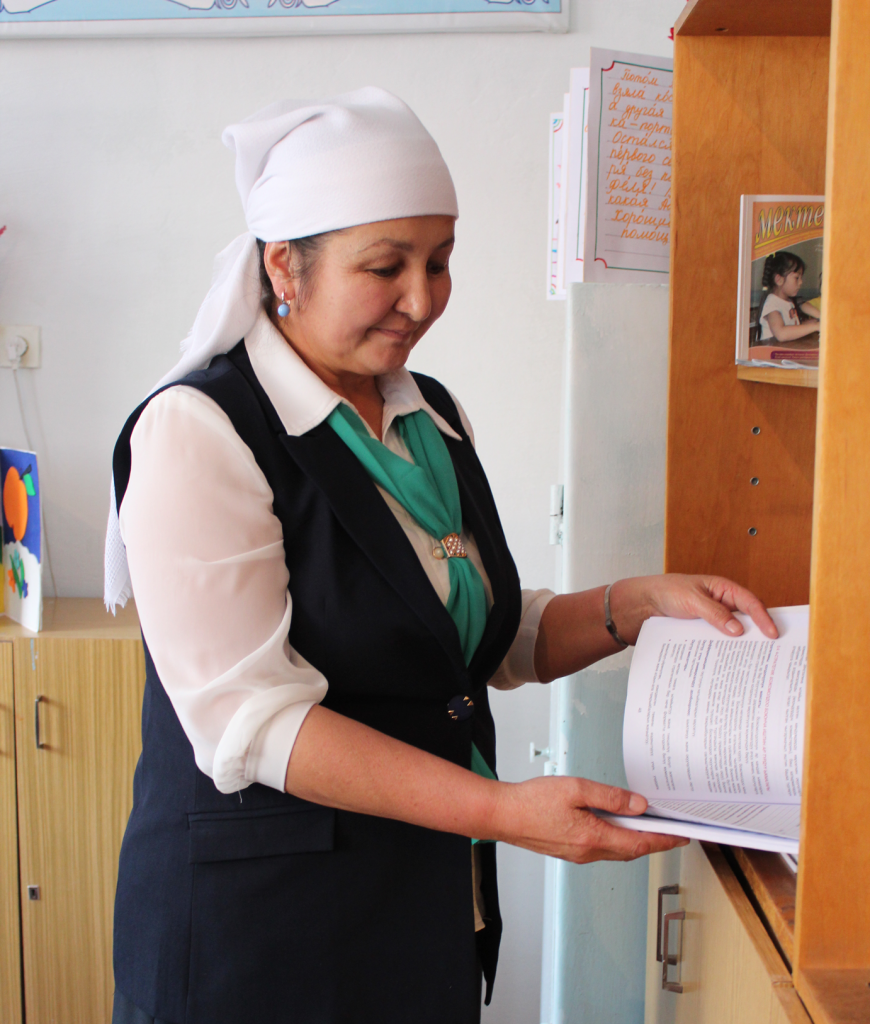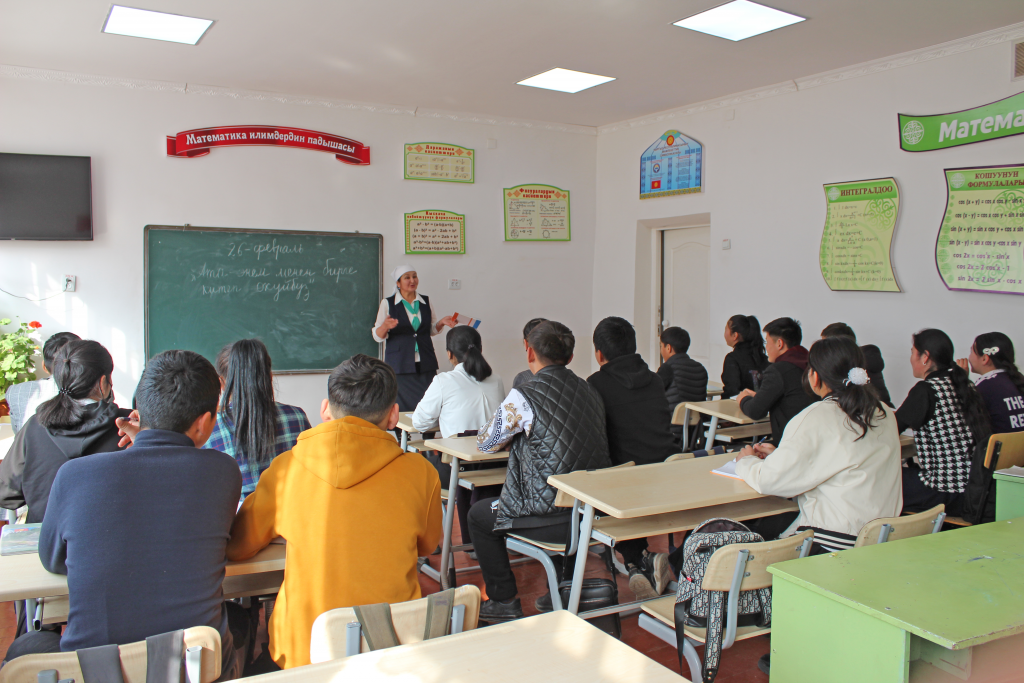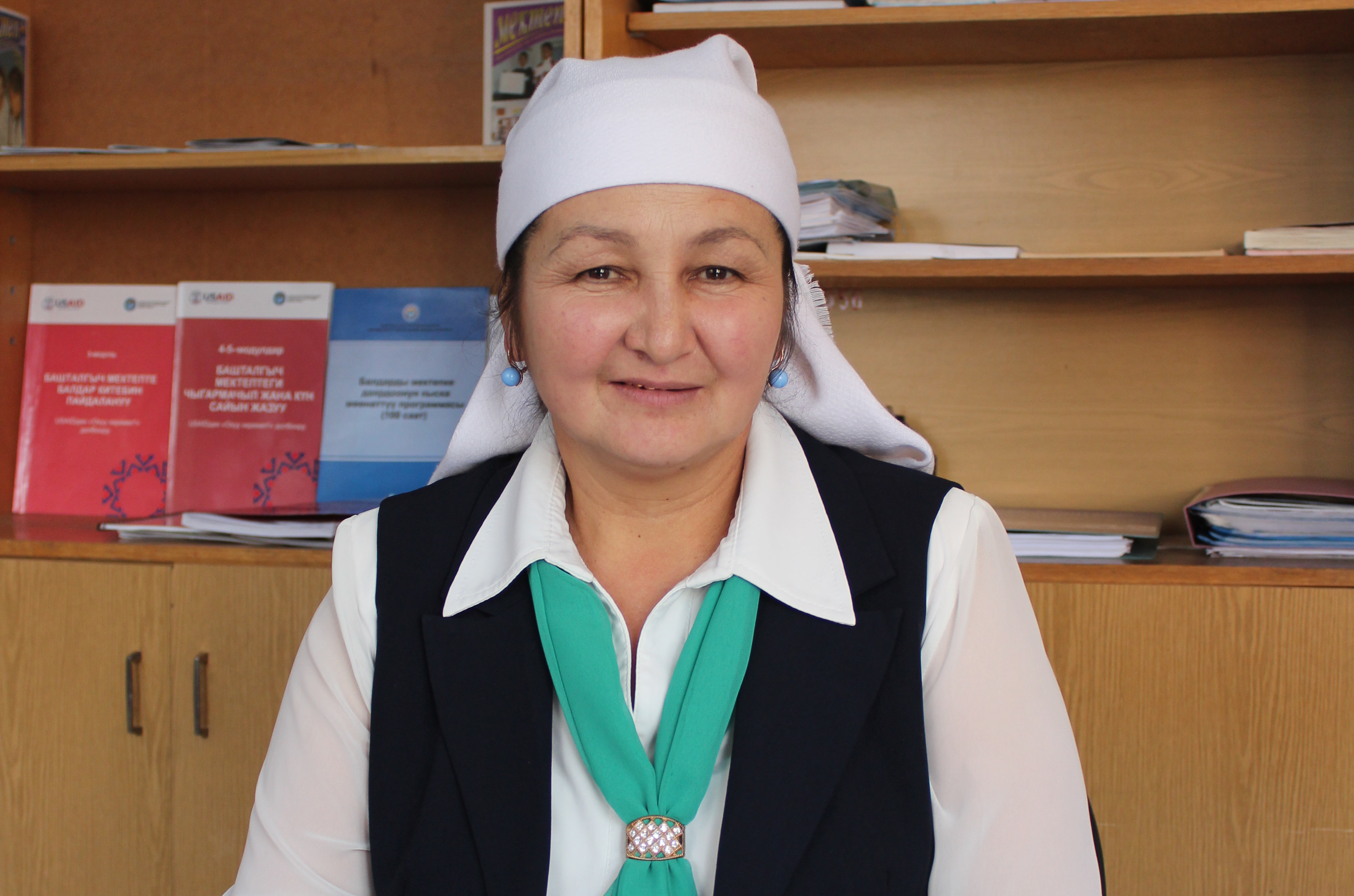Gulnara Minbaeva grew up in a small village in Alai District in Osh, Kyrgyzstan, where she works as a teacher. A proud member of the community, she has for some time taken an active interest in local development projects and has recently been elected to the local council. Gulnara is currently employed teaching primary grades in the Bektashev Secondary School, one of the schools that has taken part in the Human-Centred Design (HCD) process that forms the core of the second step of Schools2030’s three-step model – Innovate – for advancing educational change through teacher-led creativity and classroom leadership. Her team have used the HCD process to identify a gap in the literacy, creativity and critical-thinking abilities of the 10 and 15 year old cohorts, and thus have designed a Reading Club for students to support them to improve these vital skills. The Schools2030 team in Kyrgyzstan recently spoke with Gulnara to get a clearer understanding of what the experience was like for her.
Thank you so much for taking the time to meet with us Gulnara. Briefly, can you please explain what drew you in to teaching? What are your favourite things about your work?
There are many things about my work that I like very much. I greatly enjoy working with children and I am very much motivated by my internal desire to make a difference in children’s lives. By teaching, I want to contribute to my community in a meaningful way. I believe that teaching children to become better members of our society is one of the most direct ways to make an impact.
In your opinion, what are the biggest challenges to learning your students face?
Well, there are many challenges. The main ones are the shortage of teaching and learning resources, poor parental involvement in children’s learning and the fact that many children these days are distracted by their smartphones. Our students are so accustomed to constant stimuli from smartphone apps and streaming platforms that they often can’t concentrate on their learning. Another key challenge is the increasing number of children whose parents are have migrated, and they are left behind with their grandparents and other relatives. In our school, more than 30% of children’s parents live and work in other countries. Those children are often not motivated to learn.

Please tell us about your experience with human-centred design. Was there anything that surprised you about the process?
Learning about HCD was very interesting for me. Although it was challenging in the beginning, I greatly enjoyed using the tools to identify the challenges we face and coming up with so many different ideas on how we could solve them. I also liked the interviewing part. Interviews with my colleagues, students and their parents helped our design team understand what to focus on. I never knew that interviews with students could be so informative!
Also, creating a prototype of our idea was totally new for me but so interesting, I didn’t know what a prototype was before, but now I do [smiles]. It is a great way to see the “preview” of your idea in order to test all major assumptions around the idea and then improve it.
During the consultation phase, were there any stories from stakeholders that inspired your thinking?
When we were working on the prototype of our idea, we tried to engage students and other teachers to share their thoughts. And we received interesting suggestions and feedback from them. For example, one of my colleagues – Kimsan Shukurova – expressed the opinion that it would be good if the bookcases were spinning, which would be so much more engaging for the children. The children were so excited that there would be new books and a library in the school.
I felt a bit skeptical about interviewing students. I thought that as a teacher I knew better. But I was so wrong! During the interviews with students and their parents and reflecting on their answers, I learned so much. It was amazing!
How did it feel to receive feedback from your students on the ideas for the project?
While engaging students in the HCD process and capturing their feedback on our team’s idea of setting up a Reading club, one student, whose parents are in migration, sadly noted that she would be very interested in attending the club but her grandparents wouldn’t allow her to attend additional classes or activities as she needs to help them with household chores. This made me feel sad. And she is not the only student who is in this kind of situation. We have so many students, especially girls, who work hard to help their families look after their farms, care for the elderly or younger members of their extended families and do other household chores. So, we came up with the idea of hosting an information session for parents and caregivers to introduce them to the goals of the Reading club and explain why it is needed.

Do you feel more comfortable now engaging with students and families as part of the HCD process?
Certainly! In the beginning I felt a bit skeptical about interviewing students. I thought that as a teacher I knew better than students and their families and that they simply wouldn’t be able to provide me with any new insights. But I was so wrong! During the interviews with students and their parents and reflecting on their answers, I learned so much from them. Their answers, their thoughts made me look at the challenges we are facing in our school from different angles. Both students and their parents felt motivated and grateful when we approached them to ask for interviews. One student even asked whether his answers would be taken into account and then this way he could contribute to our project. It was amazing! Now I can say with confidence that interviews part is one of my most favorite part of our HCD process.
Have the workshops helped build your confidence with trying ideas before implementing them? If so, how?
Confidence came during the testing phase, and has made me believe that our idea will work for the long term. We hope that the Reading Club will help build the literacy and critical thinking skills of our students and that they will be better motivated to study hard and show good outcomes. I also hope increased learning outcomes will encourage students’ self-empowerment.
Of course, there are fears and worries about what the results will be, whether the idea will actually help increase students’ learning outcomes. I have often thought about these questions. But I am sure that we will see good results because we’ve worked hard so far, and we will continue working hard to make it happen.

What was the best thing about the experience? What lessons will you take away from it?
The distinguishing feature of our HCD journey was that we ourselves defined the problem. Yes, it was difficult, but so interesting and engaging. The pitching event (when we were able to showcase our ideas to other schools in the region) was the most exciting moment because it was the logical conclusion of our HCD journey, we were able to present our ideas, learn from other schools’ ideas, share our opinions and thoughts with other colleagues and even engage in discussions with the representatives from the Ministry of Education! We never did this! It was very exciting.
I learned through this process that we need to listen to our students’ needs closely, talk to their parents and then engage them in school improvement processes. Although it has been challenging, it can be so rewarding! We hope that we can continue participating in HCD processes in the following years and improve our school, increase our students’ learning outcomes and strengthen our ties with parents and other community-level institutions. This way we hope we can contribute back to our community and society as a whole!
Thank you, Gulnara.
This interview was conducted by Nazira Zholdoshbekova, Schools2030 Kyrgyzstan National Coordinator, and Farida Torobekova, Education Programme Coordinator, Aga Khan Foundation Kyrgyzstan.
